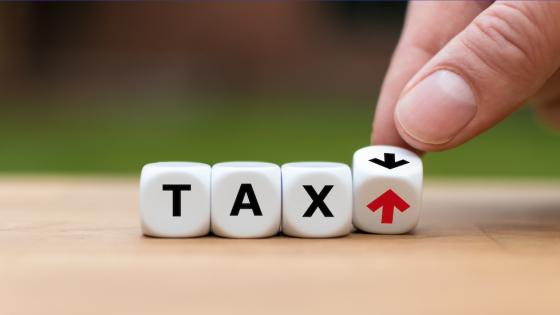The ongoing COVID-19 pandemic is having tremendous economic impacts. In addition to vital sanitary measures, governments are taking a series of actions to battle the economic fallout due to the COVID-19 outbreak, ranging from the ‘bazooka’ measures deployed in Europe and the US to various stimulus packages of unprecedented size.
The current situation in Europe, the US and elsewhere sheds light on the critical importance of well-staffed and well-funded public services to buffer the impact of extreme events like pandemics. Relatedly, the economic situation today brings to mind the importance of correct taxation of multinationals for at least two reasons.
First, the crisis reveals that some essential public goods, such as the provision of sound infrastructures and a functioning health system, have been underfunded in many countries (Armocida et al. 2020), an issue that corporate tax avoidance has likely exacerbated.
Second, some multinationals that have been avoiding corporate taxes for years are about to receive financial help from governments, which the general public may find unacceptable (Turner 2020). We argue that setting a minimum effective tax rate on the global profit of multinationals would tackle both concerns.
Economic policy and profit shifting
This crisis shows that rare events like pandemics, natural disasters, or terrorism hit individuals and businesses irrespective of their financial health or their contributions to the tax system (De Vito and Gomez 2020, Bloom et al. 2020). In France, Emmanuel Macron announced on 16 March 2020 that “No business, whatever its size, will be left at risk of bankruptcy”. Other countries have adopted a similar approach.1
These budgetary measures are essential, but may imply that even the large businesses that have implemented aggressive tax planning strategies over the recent past will receive financial help and might even be bailed out. Such ambiguity raises legitimate concerns about the social acceptability of these rescue plans.
The pandemic hits many sectors, and governments will have to step in to support the economy. The airline industry has been greatly affected, with the shock inevitably spreading across all companies operating along the value chain.2 Other industries such as the cruise or the automotive industries have also been strongly impacted by the crisis.3
Figure 1 reports the long-run average effective tax rate (ETR) for these 3 industries. The data from Compustat inform on publicly listed companies, and include most large and multinational firms either incorporated in the US or in the EU countries. The ETR has been shown to move closely with aggressive tax planning strategies, and a low average ETR is an indication of tax avoidance (Dyreng et al. 2019). Overall, we find very low ETR in the above-mentioned industries. Despite their low effective tax rates, firms in these industries will receive financial help from governments all over the world.
Figure 1 Long-run cash ETR across industries.
Note: The long-run ETR is computed as the sum of cash tax paid over a long period of 5 or 10 years divided by the sum of pre-tax income over the same period. “Air transportation” refers to industry SIC 4512, “automobile manufacturing” refers to industry SIC 3711, and “cruise lines” refers to industry SIC 4400. The data used to calculate these ratios come from Compustat North America and Compustat Global. “US” and “EU” refer to the state of incorporation. “EU” excludes Ireland, Luxembourg, Malta and Cyprus.
The data show that the ETR in these industries is far below the statutory tax rate in the EU (21.7% on average in 2019) or in the US (35% until the end of 2017, 21% thereafter). These industries have a low ETR but are no exception: the average effective tax rate across industries in the US and the EU is below 25%.
While these observations hold for the sectors that are immediately at risk, the phenomenon of tax avoidance is widespread across sectors (see Beer et al. 2019). Growing research reports sizeable tax revenue losses from profits. They amounted to about €125 billion in the US in 2017 (Clausing, 2019) and between €5 and €10 billion each year in France, according to recent studies (Laffitte et al. 2019, Tørsløv et al. 2019, Vicard 2019). As a means of comparison, the French government proposes an €8.5 billion plan to extend French unemployment benefits as a response to the current crisis.
Reform of the international tax system
Negotiations for a large-scale reform of the international tax system are ongoing at the OECD. Different proposals are discussed, including minimum taxation and other scenarios that propose redistributing taxing rights. The latter, however, remain silent about the rate at which multinationals should be taxed. Specifically, they rely on the argument that allocating taxing rights to destination markets will, de facto, reduce tax avoidance. However, the complexity entailed by more sophisticated allocation rules, paired with the need for the tax authorities to collect new information, is likely to give more room for multinationals to circumvent corporate taxation, especially in low-income countries.
By contrast, the principle of minimum taxation is a simple one. The legal contours of its implementation are already known by the tax authorities and it has the merit of tackling corporate tax avoidance directly. Its principle relies on the observation that the incentives for profit shifting arise mostly from tax differentials across jurisdictions. Minimum taxation implies that no foreign affiliate can escape a minimum rate of taxation by declaring its operations in a tax haven. Should its effective tax rate fall below this minimum, the countries where the real economic activity takes place would have the right to tax the difference. Minimum taxation thereby eliminates the incentive to conduct aggressive tax planning.
Importantly enough, this minimum tax rate is not a minimum statutory corporate tax rate but an effective one: the accumulation of tax breaks including loopholes, deductions, exemptions, or credits is permitted up to a tax threshold at which a firm’s taxes contribute to the public good sufficiently. It allows countries to put a floor on tax competition for real economic activities and gives low-tax countries a strong incentive to raise their corporate tax rates.
Momentum for the minimum tax
The minimum effective tax rate ensures that the few firms that made profits during the crises do not avoid paying taxes this year and in forthcoming years, which would be a boon for governments.4 The short-term benefit of the minimum tax could be paired with an exceptional contribution by companies which generate excess profits thanks to the crisis, as proposed by several experts (The New York Times 2020).5 Not only is the minimum tax useful to strengthen the social acceptability of some pro-business reforms and to collect corporate taxes in the short run, but this fiscal policy is also pertinent in the medium to long run. As the economic situation reverts to normal, multinationals will contribute to the financing of public goods which create the basic conditions required for successful corporate activity and are also crucial to buffer the economic consequences of future large-scale disasters. In a recent policy note, Fuest et al. (2019) show that the implementation of a minimum effective tax rate reduces profit shifting and generates substantial gains in tax revenues.
The change to the minimum effective tax rate system should minimize the room for both double taxation and non-taxation (Fuest et al. 2019, Becker and Englisch 2019). The reform can be implemented unilaterally as in the US since 2018. The US Tax Cut and Jobs Act uses a global minimum tax that allows firms to blend their foreign income from low-tax and high-tax jurisdictions, reducing their payments of the US minimum tax, and achieving a lower tax rate than the US rate. Thus, while the case of the US shows that a unilateral implementation is possible, its design remains largely unsatisfactory and a country-by-country minimum tax system should mostly be preferred.
A crucial aspect of such a reform is the level of the effective tax rate. For instance, the US global minimum average effective tax rate is between 10.5 and 13.125 percent on an annual basis. While there is no economic consensus on the optimal level, it is our opinion that a 20% minimum effective tax rate should be implemented. Indeed, a rate below 20% might legitimize aggressive tax planning, potentially leading even more companies to engage in tax avoidance. Still, a 20% average effective tax rate for multinationals’ foreign profits is very ambitious already. As a benchmark, it is worth noting that this rate is below 20% for 25 OECD countries, while it is below 11% for half of all countries worldwide.6 Moreover, even within countries with a high effective rate, many multinationals report a rate far below the 20% threshold.7
A minimum effective tax of 20% on multinationals’ foreign profits would dampen fiscal competition across countries by reducing the incentive of low- or no-tax jurisdictions whose effective tax rate is below this rate. A 20% minimum tax should also reduce the incentive of firms to locate in these countries as long as profit shifting implies positive costs.
All in all, corporate taxes will not only reflect firms' contributions to tax revenues where real economic activity takes place but also help increase tax revenues and legitimate future rescue plans.
References
Armocida, B, B Formenti, S Ussai, F Palestra and E Missoni (2020), “The Italian health system and the COVID-19 challenge,” The Lancet, Public Health, 25 March 2020.
Avi-Yonah, R, (2020), “It’s Time to Revive the Excess Profits Tax,” The American Prospect, 27 March 2020.
Bach, L, A Bozio and C Malgouyres (2019), “L’hétérogénéité des taux d’imposition implicites des profits en France : constats et facteurs explicatifs,” Rapport IPP n°21, Mars 2019.
Becker, J and J Englisch (2019), ”International Effective Minimum Taxation – The GLOBE Proposal,” SSRN.
Beer, S, R de Mooij and L Lui (2019), “International Corporate Tax Avoidance: A Review of the Channels, Magnitudes, and Blind Spots,” Journal of Economic Surveys.
Bloom, N, P Bunn, S Chen, P Mizen and P Smietanka (2020), “The economic impact of coronavirus on UK businesses: Early evidence from the Decision Maker,” VoxEU.org, 27 March 2020.
Clausing, K A (2019), “Profit Shifting Before and After the Tax Cuts and Jobs Act,” SSRN.
De Vito, A and J-P Gomez (2020), “COVID-19: Preventing a corporate cash crunch among listed firms”, VoxEU.org, 29 March 2020.
Dyreng, S, M Hanlon, E L Maydew and J R Thornock (2017), “Changes in corporate effective tax rates over the past 25 years,” Journal of Financial Economics, 124(3), 441-463.
Fuest, C, M Parenti and F Toubal (2019), “International corporate taxation: What reforms? What impact?” Notes du Conseil d’Analyse Économique, (6), 1-12.
Ilzetzki, E (2020), “COVID-19: The economic policy response,” VoxEU.org, 28 March 2020.
Laffitte, S, M Parenti, B Souillard and F Toubal (2019), “Profit Shifting in France: Evidence from Firm-Level Administrative Databases,” Focus du Conseil d’analyse économique, n°036-2019.
Tørsløv, T R, L S Wier and G Zucman (2019), “The missing profits of nations,” National Bureau of Economic Research Working Paper, W24701.
Turner, G (2020), “Tax avoiders will receive coronavirus bailouts – we must redress this injustice,” The Guardian, 27 March 2020.
Vicard, V (2019). “The exorbitant privilege of high-tax countries,” CEPII working paper.
Endnotes
1 The IMF policy tracker illustrates the policy responses to the crisis.
2 In the U.S., $50 billion of the $2 trillion stimulus package passed by the Senate will help the airline sector, with a $17 billion aid given to Boeing alone. Similar plans are on the table in Europe. The Italian government re-nationalized Alitalia with a €600 million cash injection, Denmark and Sweden have offered $302 million credit guarantees to SAS, and the French government assured that it would support Air France-KLM. Airports Council International Europe, a trade organization representing most European airports, sent a letter to the European Commission to urge it to introduce “comprehensive, inclusive and non-discriminatory support to the entire aviation ecosystem.”
3 According to the European Automobile Manufacturers’ Association, at least 1.1 million European workers are being affected by factory shutdowns as a result of the Covid-19 crisis. See: https://www.acea.be/press-releases/article/covid-19-jobs-of-over-1.1-million-eu-automobile-workers-affected-so-far-dat.
4 The minimum tax will not harm firms that underwent losses during the crisis as the tax is only levied on firms running positive profits.
5 In a recent post, Reuven Avi-Yonah (2020) proposes to revive the wartime excess profits taxes that the U.S. instituted in World War I and World War II. Excess profits taxes are designed to tax the proportion of profits that derives from some external event not of the company’s making. During Word War I, for instance, both Britain and the U.S. imposed an 80% tax rate on excess corporate profits (above an 8% annual return on tangible assets). A similar tax was set at 95% during World War II. Various methods may be used to calculate the level of excess profits. One proposal by Avi-Yonah is of particular interest: “The resulting tax (on exceptional profits) can be reduced by credits for wages of additional employees hired in 2020 to encourage the winners to hire and pay well during the recession.”
6 These EATRs are computed for the year 2015 using data from Tørsløv et al. (2019).
7 Bach et al. (2019) report an average EATR of 17.8% for large companies, and we find an average long-run cash ETR of 18.7% for the French firms listed in Compustat.








